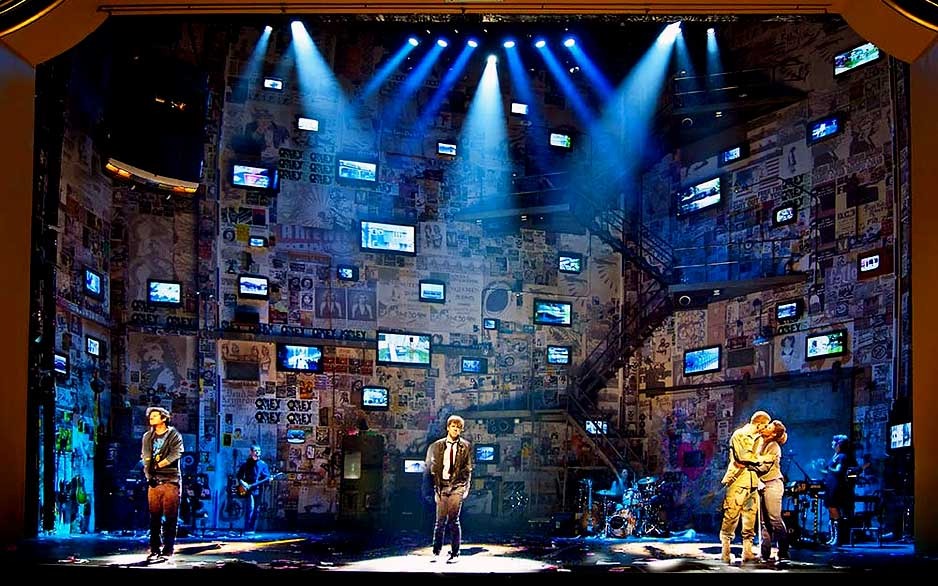I had listened to music before, but nothing quite like the Green Day rock that characterizes American Idiot.
I had watched performances before, but nothing quite like the organized chaos that marks this Broadway hit.
It was easy to understand how the set design won an Academy Award for this show. The whole tone and mood of the performance was conveyed to the audience from the beginning, and only emphasized and strengthened throughout the play. There was always a surprise.
TV screens lined the whole of the stage, alongside graffiti and newspapers.
Victor ou les Enfantes au pouvoir: Cruel and Absurd
Well, though the performance wasn't actually 'cruel' and 'absurd', it did deal with Theatre of Cruelty and Absurdism, two styles of production that I had yet to see firsthand. I'd call my experience a success, and I was fascinated by the unique gripping and disturbing nature of the play as a whole.
However, this was also the first time I understood how frustrating it must be for Koreans to watch plays in original English (Phantom of the Opera, Wicked, and Avenue Q being cases in point). I feel as if I've lost so much of the nuance, meaning, story, and essence of Victor ou les Enfantes while struggling to read the rapid translations off to the far sides of the stage. As for mise en scene, there is just too much to discuss. What first...
The first image of the stage.
And in the center is a small three-sided room with thick walls. Within it is a chair and a man... boy... stock still and unmoving, merely taking in the red light and letting it cast shadows upon his face. With arms around his knees, he sits in that cramped room. Claustrophobia - that was the first word that came to mind.
Throughout the play, the size of the room differs - it slowly expands, opening wider and wider as scenes unfold in the play, which I felt symbolized not only progression of the plot but the main character's own mind. However, eventually, the walls expand to the point that it crushes one of the other characters behind it. From then on, things begin to close up again, until the end, where the main character and his family lied dead.
Chairs also played a large role on stage, not only as props, but as a part of the set. There was initially only one chair. However, as the story continued on, more and more chairs made their way onto the stage, so subtly that I didn't notice until there were at least fourteen more arranged about the stage.
One particularly striking moment was when all of the chairs were facing inwards, when the two child characters were reenacting the scene of their parents' affair. It had an eerie effect, and seemed to suggest that this whole thing was a spectacle - people were watching. Not actors, but the chairs all facing them simply gave that feeling.
King Lear: The Suzuki Experience
This was my first time seeing Suzuki truly performed, and I was immediately struck by the movements of the play. Each actor didn't walk - they shuffled, but so gracefully that they seemed to glide. If I hadn't seen the movement of their legs beneath their costumes, I would have thought them ghosts.
The aesthetic beauty of Suzuki's directing was astounding. Every moment on the stage could have been photographed and each would have been as interesting as the next.
The set itself was simple - merely a line of sliding doors. However, depending on which doors were open and what lighting was used, the whole environment could change in its entirety. First it was a corridor, but next it could be a line of pillars, or a chamber, or the outside of a building, or even a large hall.
There were slats of wood hanging from above, which created shadows in such a way that it cast a barred design across the floor - simple, striking, and significant.

No comments:
Post a Comment